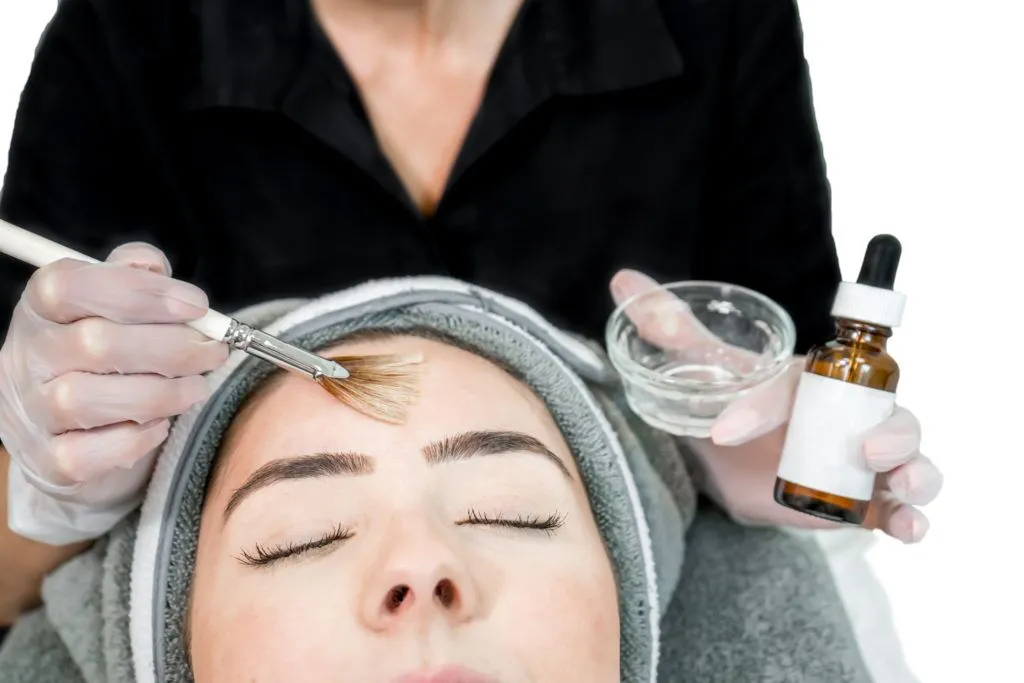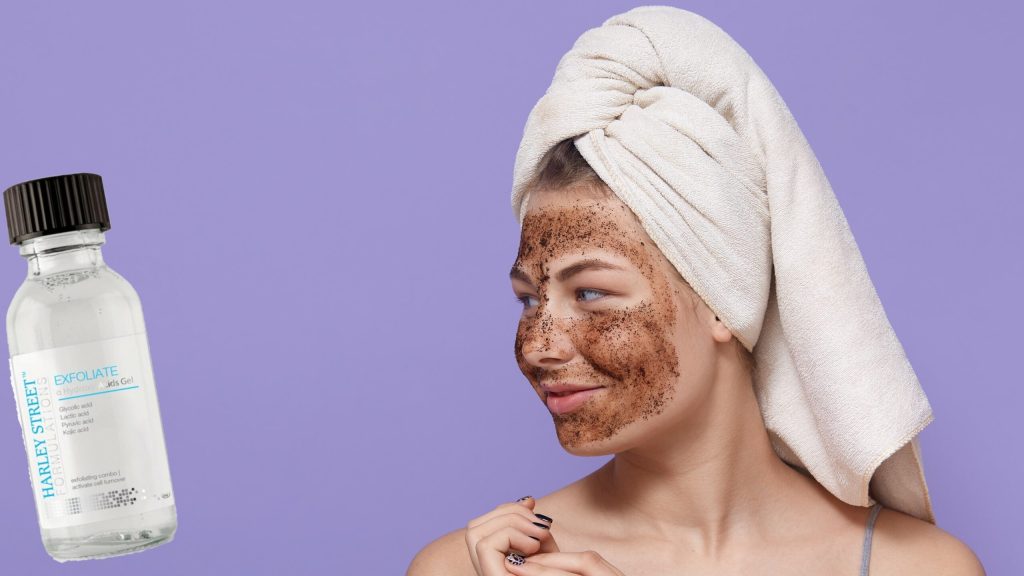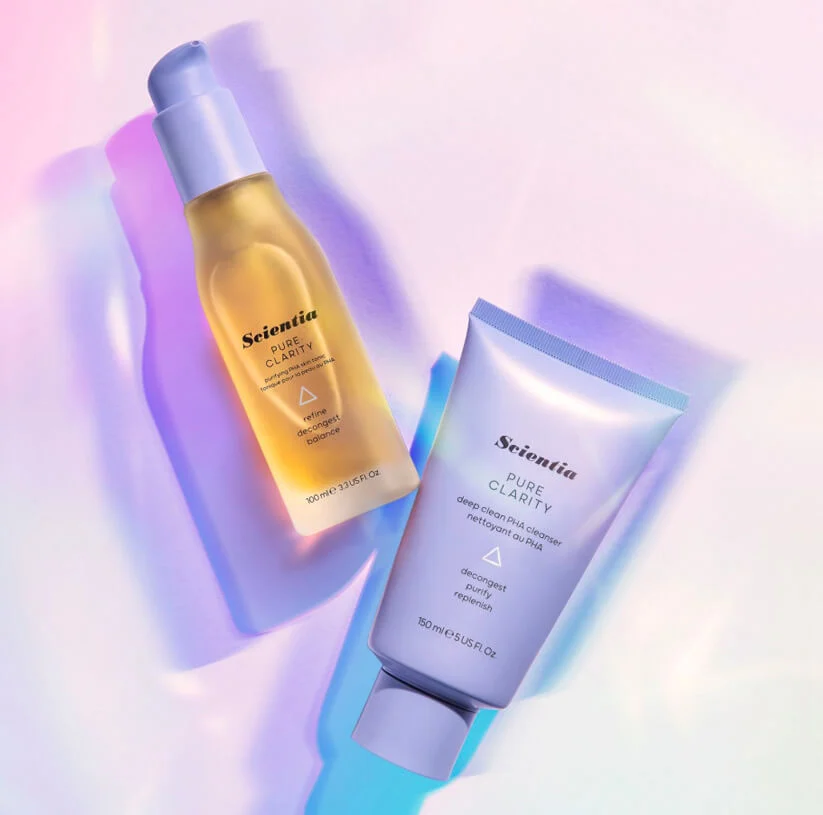
Chemical exfoliants have taken the skincare world by storm, offering effective solutions for achieving smoother, brighter, and more even-toned skin.
Unlike physical exfoliants, which use abrasive particles to remove dead skin cells, chemical exfoliants use active ingredients to dissolve and lift away impurities.
If you’re looking to upgrade your skincare routine with chemical exfoliation, here’s everything you need to know about these powerhouse products, including how they work, their benefits, and which types may be best suited for your skin type.
What Are Chemical Exfoliants?
Chemical exfoliants are skincare products designed to remove dead skin cells from the surface of the skin, improve texture, and address a range of skin concerns. They typically come in the form of serums, peels, toners, and masks and contain active acids or enzymes that break down the bonds between dead skin cells.

Unlike physical exfoliants, which can sometimes cause micro-tears in the skin, chemical exfoliants work on a deeper level, resulting in less surface damage and a more even exfoliation process. This makes them suitable for various skin types, including sensitive skin, when used correctly.
Types of Chemical Exfoliants
There are three main categories of chemical exfoliants: alpha hydroxy acids (AHAs), beta hydroxy acids (BHAs), and polyhydroxy acids (PHAs). Each type offers unique benefits and caters to specific skin types and concerns.
Alpha Hydroxy Acids (AHAs)
AHAs are water-soluble acids derived from natural sources like fruits and milk. They work on the skin’s surface, making them ideal for addressing surface-level concerns such as dullness and uneven texture. Common types of AHAs include:

- Glycolic acid: Derived from sugarcane, it has small molecules that allow it to penetrate deeply, making it ideal for rejuvenating and brightening the skin.
- Lactic acid: Milder than glycolic acid, lactic acid is derived from milk and is great for sensitive skin. It helps with hydration while gently exfoliating the skin.
- Mandelic acid: With larger molecules, mandelic acid is one of the gentlest AHAs, making it perfect for sensitive and acne-prone skin.
AHAs are particularly effective for dry and sun-damaged skin as they improve hydration, boost collagen production, and reduce the appearance of fine lines.
Beta Hydroxy Acids (BHAs)
BHAs are oil-soluble acids, which allow them to penetrate the pores and remove excess oil and debris. They are best suited for oily and acne-prone skin types. The most common BHA is:
- Salicylic acid: This BHA is well-known for its anti-inflammatory properties and is commonly used to treat acne by keeping pores clear and reducing inflammation.
BHAs are effective for anyone dealing with blackheads, whiteheads, and acne. Because they are oil-soluble, they can reach deeper into the pores, making them highly effective at targeting impurities from within.
Polyhydroxy Acids (PHAs)
PHAs are a newer type of chemical exfoliant known for their larger molecular size, which makes them gentler on the skin. Common PHAs include:

- Lactobionic acid: Derived from milk, it is excellent for sensitive skin and helps retain moisture.
- Gluconolactone: Known for its antioxidant properties, it offers gentle exfoliation while protecting the skin from environmental damage.
PHAs are ideal for sensitive skin, as they work on the surface without penetrating too deeply, minimizing irritation.
Benefits of Chemical Exfoliants
Incorporating chemical exfoliants into your skincare routine offers a wide range of benefits. Here’s what you can expect:
- Improved skin texture: Chemical exfoliants help reduce roughness and uneven texture, making the skin feel smoother and softer.
- Brighter complexion: By removing dead skin cells, they reveal a fresher layer of skin, giving your complexion a healthy glow.
- Reduced hyperpigmentation: Regular use of chemical exfoliants can help fade dark spots, acne scars, and sun damage.
- Prevention of breakouts: By clearing out pores and reducing oil buildup, chemical exfoliants can help prevent clogged pores and acne.
- Enhanced product absorption: Exfoliating your skin helps your other skincare products, like serums and moisturizers, penetrate more effectively.
How to Use Chemical Exfoliants
While chemical exfoliants can transform your skin, it’s essential to use them correctly to avoid irritation or over-exfoliation. Here’s how to incorporate them into your routine:
Start Slowly
If you’re new to chemical exfoliants, start with a lower concentration and apply it once or twice a week. This allows your skin to build tolerance without causing irritation.
Apply to Clean, Dry Skin
Most chemical exfoliants should be applied after cleansing and drying the skin. Applying to dry skin allows for better penetration and reduces the risk of irritation.
Avoid Mixing Too Many Actives
Using multiple exfoliants or combining them with other active ingredients like retinoids can irritate your skin. Stick to one chemical exfoliant at a time and avoid layering too many active ingredients.
Follow with Moisturizer and Sunscreen
Always apply a gentle moisturizer after using a chemical exfoliant to keep the skin hydrated. Additionally, use sunscreen daily, as exfoliants can make your skin more sensitive to the sun.
Choosing the Right Exfoliant for Your Skin Type
Choosing the right chemical exfoliant is crucial for achieving the best results. Here’s a guide to help you find the ideal one based on your skin type:
- Oily or acne-prone skin: BHAs like salicylic acid are excellent for clearing out pores and controlling oil production.
- Dry or mature skin: AHAs like glycolic and lactic acid work well to hydrate and improve texture. They also help boost collagen production.
- Sensitive skin: PHAs are gentler and less likely to cause irritation, making them suitable for sensitive or reactive skin.
For the best results, choose a product with a concentration suitable for your skin type. You can start with a lower concentration and gradually increase as your skin builds tolerance.
Conclusion:
Chemical exfoliants offer a gentle and effective way to rejuvenate your skin, improve texture, and tackle various skin concerns. By choosing the right exfoliant for your skin type, incorporating it into your routine correctly, and taking necessary precautions, you can enjoy a clearer, brighter complexion.
Remember to start slowly, protect your skin from the sun, and consult a skincare professional if you’re uncertain about the best option for your needs. With consistent use, chemical exfoliants can be your key to smoother, more radiant skin.
READ ALSO:







